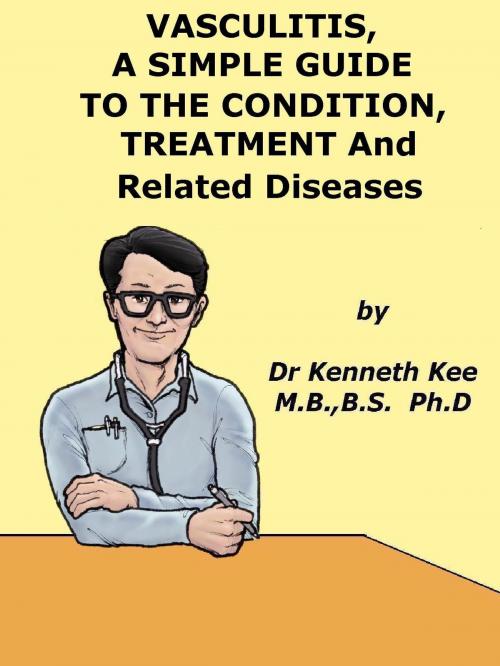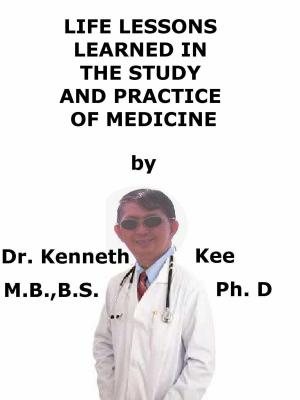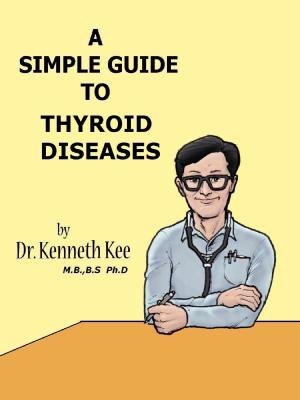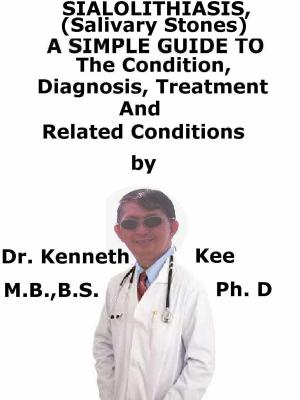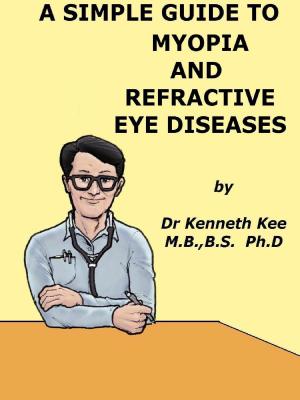Vasculitis, A Simple Guide to the Condition, Treatment and Related Diseases
Nonfiction, Health & Well Being, Medical, Medical Science, Immunology, Health, Ailments & Diseases, Immune System| Author: | Kenneth Kee | ISBN: | 9781311504265 |
| Publisher: | Kenneth Kee | Publication: | December 2, 2014 |
| Imprint: | Smashwords Edition | Language: | English |
| Author: | Kenneth Kee |
| ISBN: | 9781311504265 |
| Publisher: | Kenneth Kee |
| Publication: | December 2, 2014 |
| Imprint: | Smashwords Edition |
| Language: | English |
Vasculitis is an inflammatory condition of the blood vessels
Inflammation may involve pain, redness, warmth in the affected tissues.
If a blood vessel is inflamed, it can cause narrowing
Poor blood flow may cause cells of organs to stop living
Vasculitis can affect the arteries, veins and capillaries
Large blood vessel inflammation include Takayasu's Arteritis
The moderate blood vessels include Kawasaki and Polyarteritis
The small blood vessel includes Henoch Schonlein purpura and polyangiitis
Diagnosis is by the microscopic examination of the blood vessel biopsy
Angiography of the inflamed blood vessels is also diagnostic.
Treatment of vasculitis includes corticosteroids and cytotoxic medicines.
The goal is to stop the immune response that caused the inflammation.
-An original poem by Kenneth Kee
Interesting Facts about the Vasculitis
A Healthy Lifestyle
1. Take a well Balanced Diet
2. Treatment for vasculitis will depend on the type of vasculitis you have, which organs are affected, and the severity of the condition.
People who have severe vasculitis are treated with prescription medicines.
Rarely, surgery may be done.
People who have mild vasculitis may find relief with over-the-counter pain medicines, such as acetaminophen, aspirin, ibuprofen, or naproxen.
The main goal of treating vasculitis is to reduce inflammation in the affected blood vessels.
This usually is done by reducing or stopping the immune response that caused the inflammation.
Other Treatment
Common prescription medicines used to treat vasculitis include corticosteroids and cytotoxic medicines.
Corticosteroids help reduce inflammation in the blood vessels.
Examples of corticosteroids are prednisone, prednisolone, and methylprednisolone.
Doctors may prescribe cytotoxic medicines if vasculitis is severe or if corticosteroids don't work well.
Cytotoxic medicines kill the cells that are causing the inflammation.
Examples of these medicines are azathioprine, methotrexate, and cyclophosphamide.
The doctor may prescribe both corticosteroids and cytotoxic medicines.
Other treatments may be used for certain types of vasculitis.
For example, the standard treatment for Kawasaki disease is high-dose aspirin and immune globulin.
Immune globulin is a medicine that’s injected into a vein.
Certain types of vasculitis may require surgery to remove aneurysms that have formed as a result of the condition
3. Keep bones and body strong
Bone marrow produces our blood
Eat foods rich in calcium like yogurt, cheese, milk, and dark green vegetables.
Eat foods rich in Vitamin D, like eggs, fatty fish, cereal, and fortified milk.
Eat food rich in Vitamins B and C such as green vegetables and fruits
Zinc and other minerals are important to the body
4. Get enough rest and Sleep
Avoid stress and tension
5. Exercise and stay active.
It is best to do weight-bearing exercise such as walking, jogging, stair climbing, dancing, or lifting weights for 2½ hours a week.
One way to do this is to be active 30 minutes a day at least 5 days a week.
Begin slowly especially if a person has not been active.
6. Do not drink more than 2 alcohol drinks a day for a man or 1 alcohol drink a day for a woman.
Alcohol use also increases the chance of falling and breaking a bone.
Alcohol can affect the neurons and brain cells.
7. Stop or do not begin smoking.
It also interferes with blood supply and healing.
Chapter 1
Vasculitis is a condition that involves inflammation in the blood vessels.
The condition occurs if the immune system attacks the blood vessels by mistake.
This may happen as the result of an infection, a medicine, or another disease or condition.
Vasculitis is an inflammatory condition of the blood vessels
Inflammation may involve pain, redness, warmth in the affected tissues.
If a blood vessel is inflamed, it can cause narrowing
Poor blood flow may cause cells of organs to stop living
Vasculitis can affect the arteries, veins and capillaries
Large blood vessel inflammation include Takayasu's Arteritis
The moderate blood vessels include Kawasaki and Polyarteritis
The small blood vessel includes Henoch Schonlein purpura and polyangiitis
Diagnosis is by the microscopic examination of the blood vessel biopsy
Angiography of the inflamed blood vessels is also diagnostic.
Treatment of vasculitis includes corticosteroids and cytotoxic medicines.
The goal is to stop the immune response that caused the inflammation.
-An original poem by Kenneth Kee
Interesting Facts about the Vasculitis
A Healthy Lifestyle
1. Take a well Balanced Diet
2. Treatment for vasculitis will depend on the type of vasculitis you have, which organs are affected, and the severity of the condition.
People who have severe vasculitis are treated with prescription medicines.
Rarely, surgery may be done.
People who have mild vasculitis may find relief with over-the-counter pain medicines, such as acetaminophen, aspirin, ibuprofen, or naproxen.
The main goal of treating vasculitis is to reduce inflammation in the affected blood vessels.
This usually is done by reducing or stopping the immune response that caused the inflammation.
Other Treatment
Common prescription medicines used to treat vasculitis include corticosteroids and cytotoxic medicines.
Corticosteroids help reduce inflammation in the blood vessels.
Examples of corticosteroids are prednisone, prednisolone, and methylprednisolone.
Doctors may prescribe cytotoxic medicines if vasculitis is severe or if corticosteroids don't work well.
Cytotoxic medicines kill the cells that are causing the inflammation.
Examples of these medicines are azathioprine, methotrexate, and cyclophosphamide.
The doctor may prescribe both corticosteroids and cytotoxic medicines.
Other treatments may be used for certain types of vasculitis.
For example, the standard treatment for Kawasaki disease is high-dose aspirin and immune globulin.
Immune globulin is a medicine that’s injected into a vein.
Certain types of vasculitis may require surgery to remove aneurysms that have formed as a result of the condition
3. Keep bones and body strong
Bone marrow produces our blood
Eat foods rich in calcium like yogurt, cheese, milk, and dark green vegetables.
Eat foods rich in Vitamin D, like eggs, fatty fish, cereal, and fortified milk.
Eat food rich in Vitamins B and C such as green vegetables and fruits
Zinc and other minerals are important to the body
4. Get enough rest and Sleep
Avoid stress and tension
5. Exercise and stay active.
It is best to do weight-bearing exercise such as walking, jogging, stair climbing, dancing, or lifting weights for 2½ hours a week.
One way to do this is to be active 30 minutes a day at least 5 days a week.
Begin slowly especially if a person has not been active.
6. Do not drink more than 2 alcohol drinks a day for a man or 1 alcohol drink a day for a woman.
Alcohol use also increases the chance of falling and breaking a bone.
Alcohol can affect the neurons and brain cells.
7. Stop or do not begin smoking.
It also interferes with blood supply and healing.
Chapter 1
Vasculitis is a condition that involves inflammation in the blood vessels.
The condition occurs if the immune system attacks the blood vessels by mistake.
This may happen as the result of an infection, a medicine, or another disease or condition.
